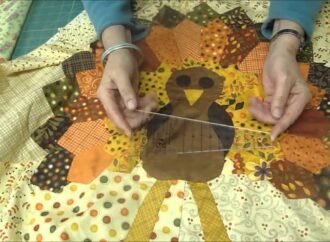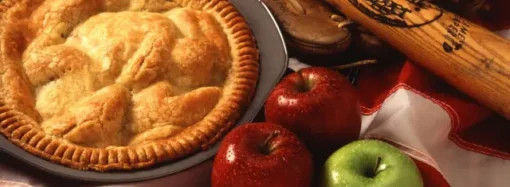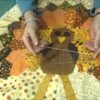On the vast, windswept prairies of the American Midwest, where tall grasses bend in unison under summer skies and the horizon stretches endlessly in all directions, a delicate white flower is telling a story of resilience. The western prairie fringed orchid, with its intricate fringed petals that glow almost luminescent in the evening light, was
On the vast, windswept prairies of the American Midwest, where tall grasses bend in unison under summer skies and the horizon stretches endlessly in all directions, a delicate white flower is telling a story of resilience. The western prairie fringed orchid, with its intricate fringed petals that glow almost luminescent in the evening light, was once nearly erased from this landscape. Today, against all odds, it is blooming again. Its revival is more than just the return of a rare plant it is a symbol of what can be accomplished when science, communities, and sheer determination come together to fight for nature. The orchid’s decline was swift and dramatic. Once abundant in the tallgrass prairies that covered much of the Midwest, it began to vanish in the late 19th and early 20th centuries as farmland expanded and native grasslands were plowed under for crops. By the 1980s and 1990s, pesticide use, habitat fragmentation, and climate pressures accelerated the losses. The plant relies on specific conditions to survive moist prairies, rich soils, and the presence of nocturnal pollinators like the sphinx moth. When those habitats were drained or destroyed, and when chemicals disrupted the insects it depended on, the orchid faded almost everywhere it once thrived. Conservationists warned it could disappear entirely within a single generation.

Yet in scattered corners of Minnesota, Iowa, North Dakota, and parts of Illinois and Ohio, tiny populations clung to survival. Sometimes fewer than a dozen plants stood alone in an open field. “It was heartbreaking,” said one botanist who has studied the orchid for decades. “You’d spend all day looking and find just one or two blooms. You couldn’t help but wonder if you were witnessing the end of a species.” But that sense of loss was met with resolve. State agencies, nonprofit groups, and ordinary volunteers refused to let the orchid go without a fight. Landowners agreed to protect patches of prairie from development. Scientists collected seeds and experimented with replanting in restored habitats. Conservationists went so far as to hand-pollinate individual flowers a painstaking process done on summer nights, when the orchid releases its sweet scent to attract moths. Meanwhile, schools and local clubs adopted the orchid as a teaching tool, reminding young people of the importance of biodiversity. Over time, the prairie itself began to respond. Restored lands brought back the right soil conditions. As pesticides were limited in some regions, pollinators like hawk moths and sphinx moths returned, fluttering in the twilight to continue the work of pollination. By the mid-2010s, survey teams started reporting small but encouraging gains a dozen orchids here, a few dozen there. And in the last few years, those numbers have multiplied. In one Minnesota site, researchers counted more than 300 flowering plants where just a handful had existed a decade earlier.

“It’s a miracle of persistence,” said Dr. Ellen Ramsey, a conservation ecologist who has tracked the species’ recovery. “These flowers aren’t just beautiful. They’re indicators of a healthy prairie ecosystem. When they return, it means the land itself is healing.”
The impact extends beyond science. Local communities have embraced the orchid as a point of pride. Small towns now host annual “orchid walks,” where families and visitors gather to trek through restored grasslands, guided by naturalists who share the flower’s story. These events, once niche, now attract eco-tourists, photographers, and nature enthusiasts from across the Midwest, boosting local economies. Cafés, bed-and-breakfasts, and gift shops have even begun to weave the orchid into their branding, turning a conservation success into a cultural identity. Schools, too, are incorporating the orchid into classrooms. Students learn not only about the biology of the plant but also about the importance of stewardship and the interconnectedness of ecosystems. “The kids love it,” one teacher in North Dakota explained. “They see that something as small as a flower can be at the center of a whole story about people working together to make a difference.” The orchid’s return also sparks broader conversations about conservation. It illustrates how targeted efforts, even for a single species, ripple outward. Protecting the orchid meant protecting prairies, which in turn benefits countless other plants and animals, from rare butterflies to grassland birds. It also strengthens soil health, reduces erosion, and improves water quality benefits that reach farmers and residents alike. What began as an effort to save one flower has become a holistic example of ecological restoration with far-reaching consequences.
Challenges remain, of course. The orchid is still considered threatened, and climate change poses new risks. Rising temperatures and shifting rainfall patterns could disrupt its fragile habitats once again. Conservationists stress that its survival depends on continued vigilance, habitat protection, and sustainable agricultural practices. But there is optimism. Having already pulled the species back from the brink, communities now see themselves as active partners in its future. Standing in a prairie at dusk, watching dozens of orchids glow as the sun dips below the horizon, it is hard not to feel a sense of awe. Each flower is a reminder of resilience of nature’s ability to recover when given a chance, and of people’s ability to make that chance possible. For a long time, the western prairie fringed orchid was a ghost of a disappearing world. Today, it is a bright emblem of hope, proof that even the smallest victories can spark the biggest inspirations.

















Leave a Comment
Your email address will not be published. Required fields are marked with *